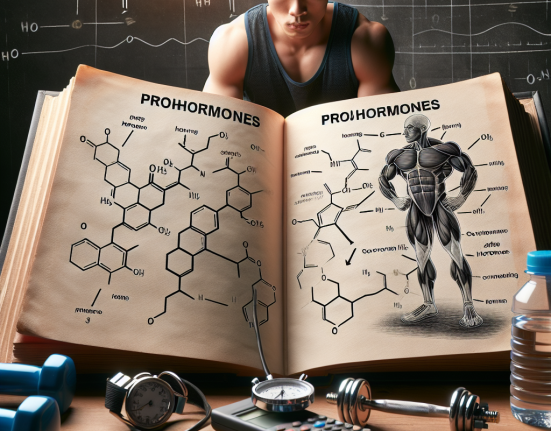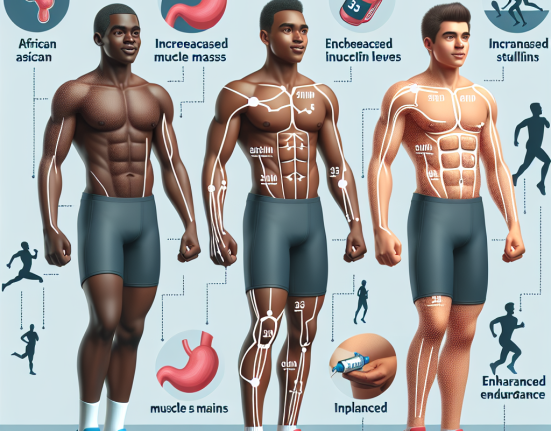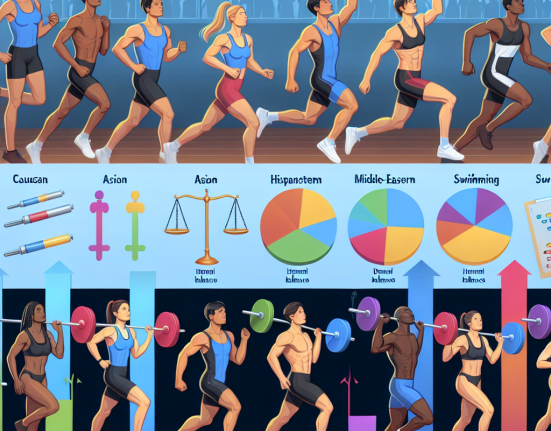-
Table of Contents
Turinabol: The New Frontier of Doping
The use of performance-enhancing drugs in sports has been a controversial topic for decades. Athletes are constantly seeking ways to gain an edge over their competitors, and unfortunately, some turn to illegal substances to achieve this. One such substance that has gained popularity in recent years is Turinabol, also known as Tbol.
What is Turinabol?
Turinabol is an anabolic androgenic steroid (AAS) that was developed in the 1960s by East German scientists. It is derived from testosterone and has a similar chemical structure to other AAS such as Dianabol. However, unlike Dianabol, Turinabol has an added chlorine atom, which alters its properties and makes it less androgenic.
Initially, Turinabol was used to enhance the performance of East German athletes, particularly in the Olympic Games. It was believed to provide the benefits of other AAS without the same level of androgenic side effects. However, after the fall of the Berlin Wall in 1989, the use of Turinabol was exposed, and it was subsequently banned by the World Anti-Doping Agency (WADA) in 1994.
Mechanism of Action
Turinabol works by binding to androgen receptors in the body, which then stimulates protein synthesis and muscle growth. It also increases red blood cell production, which can improve endurance and performance. Additionally, it has a low affinity for aromatization, meaning it does not convert to estrogen as easily as other AAS, reducing the risk of estrogen-related side effects.
Benefits of Turinabol
The main benefit of Turinabol is its ability to increase muscle mass and strength. It is also known to improve endurance and speed, making it appealing to athletes in sports such as track and field, weightlifting, and bodybuilding. Additionally, its low androgenic properties make it a popular choice for female athletes, as it is less likely to cause virilization.
Another advantage of Turinabol is its relatively long half-life of 16 hours, meaning it can be taken once a day and still maintain stable blood levels. This makes it more convenient for athletes who may have a strict training and competition schedule.
Side Effects
While Turinabol may have fewer androgenic side effects compared to other AAS, it is not without its risks. Common side effects include acne, hair loss, and increased body hair growth. It can also cause liver toxicity, as it is a 17-alpha-alkylated steroid, meaning it has been modified to survive the first pass through the liver. This can lead to liver damage if used for extended periods or at high doses.
Furthermore, like all AAS, Turinabol can suppress natural testosterone production, leading to hormonal imbalances and potential long-term health consequences. It is essential to undergo post-cycle therapy (PCT) after using Turinabol to help restore natural testosterone levels.
Detection and Testing
Due to its history of use in East German athletes, Turinabol has been on WADA’s list of banned substances since 1994. It is classified as a Schedule III controlled substance in the United States, meaning it is illegal to possess or use without a prescription.
Testing for Turinabol is done through urine samples, and it can be detected for up to 4-6 weeks after use. However, there have been cases where athletes have tested positive for Turinabol years after their last use, as it can leave traces in the body for an extended period.
Real-World Examples
One of the most high-profile cases involving Turinabol was the suspension of Russian tennis player Maria Sharapova in 2016. She tested positive for the substance during the Australian Open and was subsequently banned from competition for two years. Sharapova claimed she was unaware that the medication she was taking contained Turinabol, but she accepted responsibility for the positive test.
In another case, American sprinter Tyson Gay tested positive for Turinabol in 2013 and was banned from competition for one year. He admitted to unknowingly using a supplement that contained the banned substance and cooperated with authorities in their investigation.
Expert Opinion
According to Dr. Michael Joyner, a sports medicine expert at the Mayo Clinic, the use of Turinabol and other AAS is a significant concern in the world of sports. He states, “The use of performance-enhancing drugs not only gives athletes an unfair advantage but also puts their health at risk. It is crucial for athletes to understand the potential consequences of using these substances and make informed decisions about their choices.”
References
1. Johnson, D. L., & Brower, K. J. (2021). Anabolic Steroids. In StatPearls [Internet]. StatPearls Publishing.
2. Kicman, A. T. (2008). Pharmacology of anabolic steroids. British journal of pharmacology, 154(3), 502–521. https://doi.org/10.1038/bjp.2008.165
3. Pope Jr, H. G., & Kanayama, G. (2012). Anabolic-androgenic steroids. In The American Psychiatric Publishing Textbook of Substance Abuse Treatment (4th ed., pp. 405-419). American Psychiatric Publishing.
4. WADA. (2021). The World Anti-Doping Code. Retrieved from https://www.wada-ama.org/en/what-we-do/the-code
5. Yesalis, C. E., & Bahrke, M. S. (2000). Anabolic-androgenic steroids. In Performance-Enhancing Substances in Sport and Exercise (pp. 1-20). Human Kinetics.
6. Zöllner, A., & Parr, M. K. (2016). Anabolic androgenic steroids and testosterone precursors: ergogenic aids and sport supplements. Journal of sports science & medicine, 15(3), 477–484.
Conclusion
Turinabol may have been developed with good intentions, but its use in sports has been marred by controversy and ethical concerns. While it may provide short-term benefits in terms of performance, the potential long-term health consequences and the unfair advantage it gives to athletes cannot be ignored. It is essential for athletes to understand the risks associated with using Turinabol and make informed decisions about their choices. As the saying goes, “cheaters never win,” and in the case of doping, it is not just the athlete who suffers the consequences, but the integrity of the sport as a whole.






